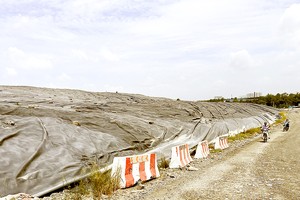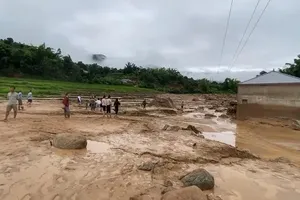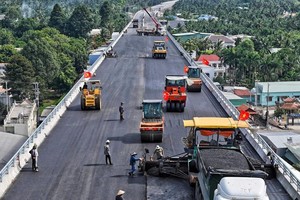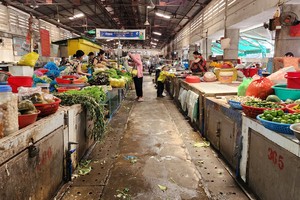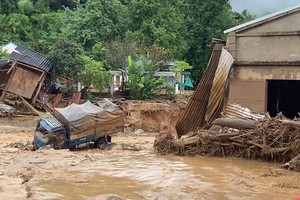Farmers have suffered through scorching weather that has dried up rivers and burned crops in the central region over the last few months.
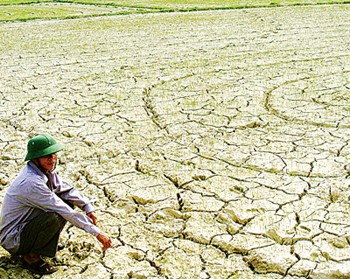
Normally, rivers in the regions see at least minimal flooding by the end of May every year. However, this year, though June is nearly over, the floods have yet to arrive.
Big rivers like Vu Gia and Thu Bon in Quang Nam Province, Tra Khuc in Quang Ngai and La Tinh in Binh Dinh have been depleted. Many sections of Gianh River in Quang Binh Province have also dried up.
In Ha Tinh Province’s Thach Ha District, hundred of farmers tried to take water from small exhausted canals to their fields with bailers and buckets at noon on June 23.
Farmer Nguyen Hoanh Ty, 50, said that he was brokenhearted to see over half of his 5,500 square meters of rice burned and his fields charred.
In the neighboring province of Nghe An, Nguyen Duy Nam from Do Luong District said that he has never seen such a severe drought. Since the heavy rains of late September last year, he has yet seen significant precipitation.
Nguyen Thanh Tung, deputy chairman of My Son Commune, said that the commune has 410 hectares of agricultural land with a cultivation area of 120 hectares, all of whose plants have died off due to drought.
In Quang Nam Province, the intensely hot weather has changed the rice fields from green to yellow in districts of Thang Binh, Duy Xuyen and Dai Loc.
The condition is not any better in Binh Dinh Province where plenty of fields have been abandoned due to a shortage of irrigation water.
Depleted rivers and wells
At this time, the A Vuong hydropower plant reservoir and irrigation reservoirs like Phu Ninh, Khe Tan, Thai Xuan and Cao Ngan in Quang Nam Province are depleted.
Thu Bon River system’s water levels have plunged, worsening salt intrusion at river mouths.
In the neighboring province of Quang Ngai, the water levels of irrigation reservoirs have also been exhausted.
Thua Thien-Hue Province’s irrigation work management and exploitation company said that if the drought extends for one more week, about 30 percent of rice fields in the province will fade, with worst damaged areas being in Nam Dong and A Luoi Districts.
Meantime, at 11 islets in the middle of Gianh River in Quang Binh Province, residents are living amidst an area penetrated by seawater; they had been living off rainwater preserved in jars, which have run out.
Over the last two months, they have had to buy water at an exorbitant price of VND100,000 per cubic meter.
Hoang Xuan Hien in Mai Hoa Commune of Tuyen Hoa District lamented that his livelihood, carrying passengers by boat on the Gianh River, has been seriously affected as the river’s water level has plummeted.
Save rice
Deputy Chairman of Quang Nam Province People’s Committee Nguyen Ngoc Quang has approved a project to deal with drought-affected summer-autumn crops.
Accordingly, the province will spend over VND8 billion (US$421,000) to install water-pumping machines in fields. Drought prevention efforts will focus on the four most arid districts of Dai Loc, Dien Ban, Duy Xuyen and Thang Binh.
In addition, the province has also dammed up dikes to cope with salt penetration and has accumulated water from the upper reaches of rivers to pump in for agricultural production and the needs of daily life.
The People’s Committee of Binh Dinh Province has instructed the Water Supply and Environment Center to transport fresh water to thirsty areas rapidly. The province has also decided to finance drilling wells for farmers with a cost of about VND1.5 million per well.
However, several agricultural and irrigation officials from the central provinces said that if it does not rain within the next ten days, 30-40 percent of the summer-autumn rice crops in the central region will suffer a complete loss.

